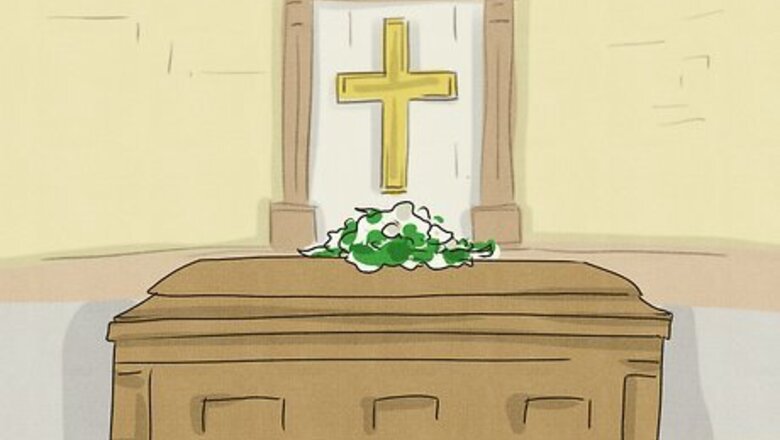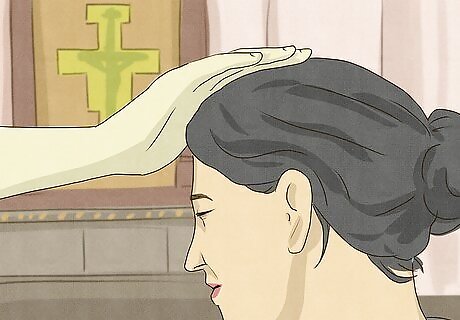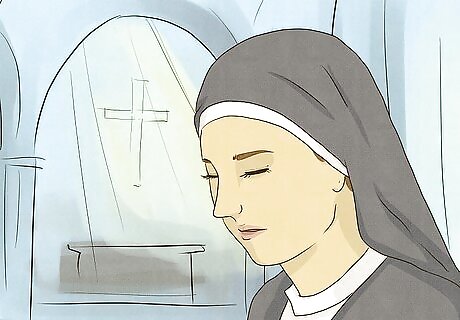
views
Navigating the Canonization Process

Canonization begins 5 years after death. Before the Catholic Church even begins the canonization process, or the process that names someone a saint, it waits 5 years until after that person’s death, then the person’s bishop can ask the pope for permission to begin. This is to let the dust settle, so to speak, and make sure that the candidate has an enduring legacy of holiness. There are some exceptions! If the pope chooses, he can waive this period, as was done for Mother Teresa and Pope John Paul II. Someone who’s begun the process of canonization is known as a “Servant of God.”

People familiar with the person give testimony to their holiness. Once the canonization process begins, the person’s diocese starts to collect testimonies from the public about their life and virtues. They look for things like good deeds or pious living, like Mother Teresa taking a vow of poverty while also helping the sick. The diocese also investigates any personal writings or other records the person may have left behind. This part of the process can take years to complete and, ultimately, it’s up to the bishop to decide if there’s enough evidence to move the process forward.

A tribunal and the pope then votes on if the person is worthy. Once the bishop has approved the collected evidence, he sends it to the Congregation for the Causes of Saints, which is made up of 9 theologians. These theologians examine the evidence, decide if the person led a life of virtue, then vote on whether or not they agree with the bishop. If they do, the process moves forward. After, the theologians’ findings are sent to the cardinals and bishops of the congregation for review, and yet another vote of approval. Finally the pope himself offers his approval, and the person gains the title of “Venerable.” Theologians look for the cardinal virtues—prudence, justice, temperance, and courage—and theological virtues—faith, hope, and charity—displayed in the person’s life.

The person becomes “Blessed” by having a miracle attributed to them. After a person is titled “Venerable,” the Church investigates any miracles that occurred during the saint’s life or after. If a miracle does surface, it’s closely examined by medical experts and theologians alike for authenticity. Once it’s verified, the pope beatifies the person, granting them the title “Blessed.” For a miracle to be verified, it must be 3 things: total (its effects are complete and undeniable), instant (the effects took place over a short period of time), and durable (the effects are lasting). Miracles may include post-mortem events like healing or supernatural preservation or alteration of the person’s body, or living events like levitation or being in 2 places at once. Mother Teresa’s first miracle was reportedly the curing of a lump in a woman’s abdomen after a fellow sister prayed to her for help. If the person was a martyr, meaning they died for their faith, they may skip the miracle phase.

A second miracle must be proven for the person to become a saint. After the person is beatified, the Church then waits for a second miracle, and conducts the miracle investigation again. If the congregation again verifies it, and the pope again approves, the pope formally canonizes the person as a saint in the Catholic Church. Mother Teresa’s second miracle was the curing of a man’s brain abscesses after a relic of Mother Teresa was touched to his head. After, it’s traditional for Catholics to pray to the new saint and ask them to petition God on their behalf, or even build churches or shrines in their name, or artworks depicting the saint with a halo. Some recent beatified and canonized people include St. Marie Rivier, who founded an order of sisters and died in 1796. There’s also Blessed Carli Acutis, a programmer who chronicles miracles online, and died in 2006.
Living the Life of a Saint

Get baptized in the Catholic Church. Modern saints in Roman Catholicism have all been baptized as Catholic themselves, and while it’s not a hard-and-fast requirement for sainthood, it is standard. If you have not yet been baptized and confirmed into the Church, that’s the best place to start your saintly journey. If you’re worried that you’ve been too sinful in your life so far to become a saint, breathe easy! It’s never too late to turn your life around, and many prominent saints had their own dramatic turning points.

Observe the sacraments and study scripture. Saints are often people who are overflowing with grace, and the best way to live a life of grace is by using the tools God has already given us, namely scripture and the 7 sacraments. Make sure to stay regular on recurring sacraments, like eucharist (mass) and confession, and consider receiving one-time sacraments like marriage or holy orders. To study scripture, read the Bible and the Catechism, and reflect on what they mean to you and your life as a Catholic.

Participate in a community of faith, like a congregation. Saints need other people to vouch for them before they become canonized, so it’s a good idea to mingle with your congregation. Of course, don’t just do it for the glory. Get to know the people in your community and help out by participating in mass, charity events, and things like Bible studies. That way, you’ll grow in grace alongside other devout believers.

Pray often and live an exemplary and pious life. Sainthood requires outstanding displays of faith. You might volunteer to help the needy, devote your life to standing up for justice, or even enter the holy orders and become a priest, deacon, nun, or other vocation. Most of all, pray often and in earnest, asking God for the strength and grace to live such a life. Joining the church as a priest or nun is a good start, but not required. The Vatican works hard to identify lay people who are candidates for sainthood. Think big! Some saints are honored for extraordinary service to a small group of people or the local community, but your exemplary life is more likely to be recognized if you have a bigger, more globally noticeable impact.


















Comments
0 comment